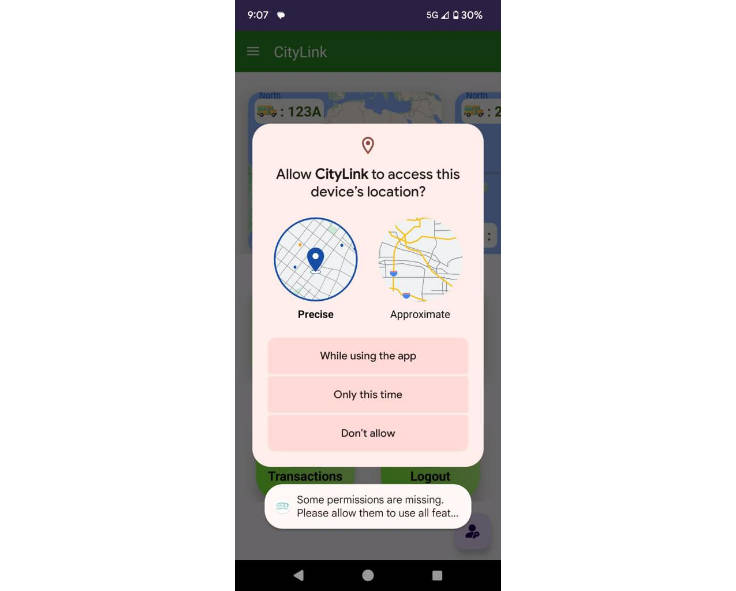A bus traversal system which streamlines user experience and tackles wide range of issues using GPS

Citylink- A Bus Management Application
The current bus traversal and management system suffers from various challenges such as inefficient resource allocation, lack of real-time monitoring, and manual handling of operations, resulting in delays and inconvenience to passengers. These challenges can be addressed by implementing a cloud computing-based bus traversal and management system that leverages advanced technologies to provide a seamless and efficient travel experience. To address these challenges, a cloud computing-based bus traversal and management system can provide a comprehensive solution. The proposed system aims to optimize the utilization of resources such as buses and drivers, reduce waiting times, and enhance the overall customer experience. It will include features such as the live location of buses, route optimization, and e-ticketing
Flowchart of the proposed system
Screenshots of the application
users get an e-mail with a deep link to open the application:
Set of permissions needed:
Splash Screen and login action:
splash.screenand.login.mp4
User Login and Home Page:
Users can add money and get access to transaction history:
Users can be notified about the issues different users face on their routes:
Users can see bus stops near them:
When a bus is in the user’s vicinity they get notified :
If the bus keeps on approaching, the user is asked whether they want to board the bus and start tracking their journey:
At the end of the journey, the user is asked whether they want to deboard the bus and stop the tracking service:
The trip summary is displayed and recorded:
Methodology
- Research design: Tracking user’s journey and deducting traveling fare from the in-built e-wallet to avoid free-rider problem.
- Participants: The system targets daily commuters of local buses.
- GPS Tracking: GPS (Global Positioning System) tracking is a technology that uses satellites to determine the precise location of the user. As the nature of technology is independent of the internet it’s preferable.
- In-App Wallets: An in-app wallet is a digital wallet that allows users to store and manage various payment methods within a mobile application. In-app wallets are used here to deduct the user’s fare directly and ensure no one can take advantage of free riding. Users can add their credit or debit cards, bank accounts, or other payment methods to their in-app wallet while registering.
- User Authorization: Checking if the user passes certain preconditions like his e-wallet balance should be minimum 50Rs before boarding the bus. After passing these preconditions the user will be allowed to board the bus and the premises and his journey tracking will begin.
- BLE: Bluetooth Low Energy is preferable because the drawback of Bluetooth messaging is to need to pair devices. BLE can send short messages without the need for pairing.
Technologies, libraries, and packages used
-
Kotlin
-
Firebase
-
Android Studio
-
Cyclic
Local Setup
- Fork this repository
- Clone it in your local system
- Open Android Studio and select ‘Open Project’. You can just browse through the file chooser to the folder where you have cloned the project. The file chooser will show an Android face as the folder icon, which you can select to open the project.
- Link the project to your Firebase Account and your RESTFUL server (we have included sockets too)
- After opening the project Android Studio will try to build the project directly. To create it manually, follow the menu path ‘Build’/’Make Project’, or just click the ‘Play’ button in the toolbar to build and run it on a mobile device or an emulator. The resulting .apk file will be saved in the ‘build/outputs/apk/’ subdirectory in the project folder.
- You can install the .apk file on your device and enjoy its enriching features.
Application link: https://drive.google.com/uc?id=1eu_pLJbrTwRIBrJJTAjE_vP8AS0BR6MV&export=download

